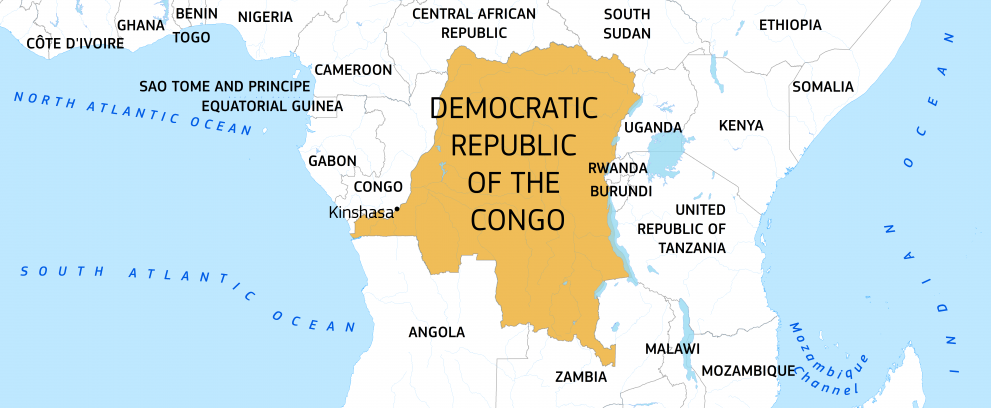Introduction
Between conflict, poverty, malnutrition and frequent disease outbreaks, humanitarian needs in the Democratic Republic of the Congo (DRC) are among the highest in the world.
The 2024 UN’s Humanitarian Response Plan for the DRC requires $2.6 billion to meet the needs of the most vulnerable people.
The EU continues to provide life-saving assistance to the most vulnerable, often people displaced by conflict or epidemics.
What are the needs?
People in the DRC have been facing persistent conflict and violence for decades. Leaving their homes behind, the most vulnerable are forced to look for safety in overcrowded family homes, makeshift camps, schools or churches, and to restart their lives repeatedly.
There are currently nearly 7 million displaced people within the DRC – the highest number in Africa, after Sudan.
More than 1 million Congolese refugees live in neighbouring countries. Given the instability in the region, the DRC itself hosts more than 500,000 refugees from neighbouring countries.
Violations of human rights and international humanitarian law are reported every day. Sexual and gender-based violence is widespread and has reached appalling levels Child recruitment, extortion, physical violence, murder, abduction, torture, looting, and attacks on schools and health structures are frequent.
The ongoing violence and conflict also prevent people from accessing their fields and markets, generating food insecurity, displacement and more poverty forcing particularly women and girls to harmful practices such as survival sex
Some 25.4 million people are acutely food insecure (over 1/4 of the population) due to the upsurge of violence, conflict and instability in eastern DRC and large internal displacement. According to the World Food Programme, an estimated 2.8 million children are acutely malnourished.
In addition, the DRC faces recurrent epidemics, such as cholera, measles, monkey pox and Ebola. Its weak health system and lack of basic infrastructure and social services, including in the health sector, add to the challenge.
The DRC bears the brunt of recurrent large-scale natural hazards, including devastating floods and volcanic eruptions. These affect and often displace hundreds of thousands of people.

How are we helping?
In 2024, the EU has made an initial allocation of €63.75 million in humanitarian funding to address the needs of the most vulnerable people in the DRC.
Most of the EU-funded humanitarian projects are helping vulnerable people in the east of the country, where persistent conflict is ongoing. The EU works with partners to:
- provide food assistance and nutrition, shelter, protection, emergency healthcare, including care for survivors of sexual violence
- improve water, sanitation and hygiene conditions
- ensure that children caught in humanitarian crises can go to school.
Through its Humanitarian Air Flight, the EU provides air support to humanitarian organisations, enabling them to deliver aid to people in hard-to-reach areas.
In addition, given the rapidly deteriorating situation in the east of the country, the EU set up 2 Humanitarian Air Bridge operations to Goma in 2023. These EU Humanitarian Air Bridges have, among other goods, delivered 440 tonnes of medical and nutritional supplies to the DRC.
The EU’s support also allows humanitarian organisations with specific expertise in nutrition to work in areas that have alarming malnutrition levels, saving the lives of thousands of children.
Last updated: 13/03/2024
Facts & figures
25.4 million people are severely food insecure
6.9 million internally displaced people
More than 1 million refugees from the DRC in neighbouring countries
Over 500,000 refugees in the DRC
2.8 million children under 5 are malnourished (UNOCHA, UNHCR, and UNICEF)
EU humanitarian funding:
Close to €64 million in 2024
Almost €100 million in 2023

